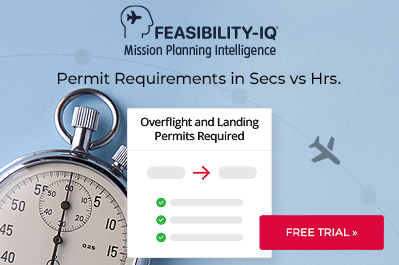Turkey Overflight Permit Changes – Part 1: Good News for Bizav

This is part one of a two-part article series on overflight permit changes for Turkey.
Requirements for Turkey overflights eased significantly on April 2, 2015 – at least for most general aviation operators. As a result of regulatory changes, operators of most private non-revenue and charter (non-scheduled commercial) aircraft can now obtain the right to overfly Turkey without an overflight permit.
The following is an overview of what you need to know:
1. Overflight requirements – what’s new
Prior to April 2, 2015, if your aircraft was not registered to a European Civil Aviation Conference state, you were required to obtain permits for each overflight of Turkey. With new regulatory changes, these permits are no longer needed so long as your aircraft is registered to a country with which Turkey has a bilateral Air Transport/Air Services agreement and the flight is “deemed appropriate.” For the flight to be “deemed appropriate,” an operator must submit required and valid documentation to the Turkish Civil Aviation Authority (CAA). As long as this documentation is accepted, remains valid, and does not expire, the approved operator may overfly Turkey at any time by simply filing a flight plan three hours prior to departure.
2. AIP authorization
The pertinent portion of Turkey’s Aeronautical Information Publication (AIP) 2.2 concerning overflight permits is as follows:
3. What the AIP regulation means
For operators with aircraft registered to countries without bilateral agreements, it’s still necessary to submit documentation and obtain permits for each overflight of Turkey. If your country of registry has a bilateral agreement with Turkey, but one of your on-file documents expires, you’ll need to resubmit documentation to re-validate permit-free overflight authorization. For operators of aircraft with bilateral agreements in place and up-to-date documentation, overflight permits for Turkey may be a thing of the past.
4. Countries with bilateral agreements
There are currently 139 countries having bilateral Air Transport/Air Services agreements with Turkey. While there’s no official government listing with these 139 countries, your 3rd-party provider will advise operators if they qualify for permit-free overflight.
5. Private vs. charter requirements
There are no differences in overflight rules and documentation requirements for private non-revenue and charter operations, with the exception that charter operators must provide an Air Operator Certificate (AOC).
6. Obtaining permit-free authorization
All operator requests for Turkey overflight permits or ongoing authority to overfly Turkey without a permit must go through a vendor – such as a ground handler – based in Turkey. Your 3rd-party provider will submit documentation through the vendor who in turn will work with CAA. Submission requests are per aircraft, but there’s no limit to the number of aircraft you may register. While confirmation numbers are not provided from CAA, completing this process allows operators to overfly Turkey by simply filing flight plans three hours prior to departure. When you provide documentation to your 3rd-party provider for a first overflight of Turkey, it’s always best to adhere to the two days’ minimum lead time requirement so that CAA can validate the documents and confirm if the operator can proceed without a permit.
7. Required documentation
Documentation that must be submitted for either a one-time overflight permit or permit-free overflight includes the following:
- operator information
- aircraft type, seating capacity, and country of registry
- the captain’s name and the number of crew members/passengers
- whether you’re operating as private or charter
- airworthiness and registration certificates
- noise certificate
- worldwide insurance (must be in Special Drawing Rights [SDRs] denomination)
- AOC (for charter operators)
While there’s no firm guidance on the amount of worldwide liability insurance that must be carried, CAA will advise if your submitted policy amount – which must be in SDRs – is insufficient.
8. Lead times
Official lead time for Turkish overflight for aircraft that require overflight permits, is five business days. CAA authorities will accept shorter-notice requests at their discretion, with a minimum of two business days’ lead time, assuming all documentation is in order. Aircraft that do not require permits to overfly Turkey only need to file flight plans at least three hours prior and ensure that the purpose of the flight (business or private flight) is indicated in the remarks section 18 of the ICAO flight plan.
07/24/2015: Updated by author
Conclusion
To take advantage of these regulatory changes and avoid having to obtain overflight permits for Turkey, we recommend applying well in advance with all required documentation. Be sure to confirm that your worldwide insurance policy is denominated in SDRs as CAA Turkey requires this type of monetary value for coverage.
Later, we’ll discuss permit exemptions for operators transiting Turkey’s airspace.
Questions?
If you have any questions about this article or would like assistance with Turkey overflight permits, contact me at johnmcclelland@univ-wea.com.




